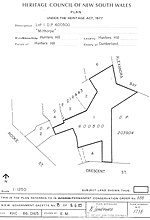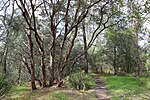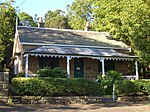Longueville, New South Wales

Longueville is a suburb on the Lower North Shore of Sydney, New South Wales, 8 kilometres north-west of the Sydney central business district, in the local government area of the Municipality of Lane Cove. Longueville is a small residential suburb on the peninsula between Tambourine Bay and Woodford Bay, on the banks of the Lane Cove River. Originally a home to manufacturing industries, the suburb had its beginnings as a residential area in the 1870s. Longueville was officially proclaimed a suburb in the 1920s.Before settlement, Longueville was the home of the Cammeraygal people of the Ku-ring-gai Aboriginal Tribe. Today the suburb is home to some of Australia's most expensive real estate, with the Sydney Morning Herald ranking it as Sydney's fourth most-expensive suburb.
Excerpt from the Wikipedia article Longueville, New South Wales (License: CC BY-SA 3.0, Authors, Images).Longueville, New South Wales
Amalfi Place, Sydney Longueville
Geographical coordinates (GPS) Address Nearby Places Show on map
Geographical coordinates (GPS)
| Latitude | Longitude |
|---|---|
| N -33.83309 ° | E 151.16494 ° |
Address
Amalfi Place
Amalfi Place
2066 Sydney, Longueville
New South Wales, Australia
Open on Google Maps










